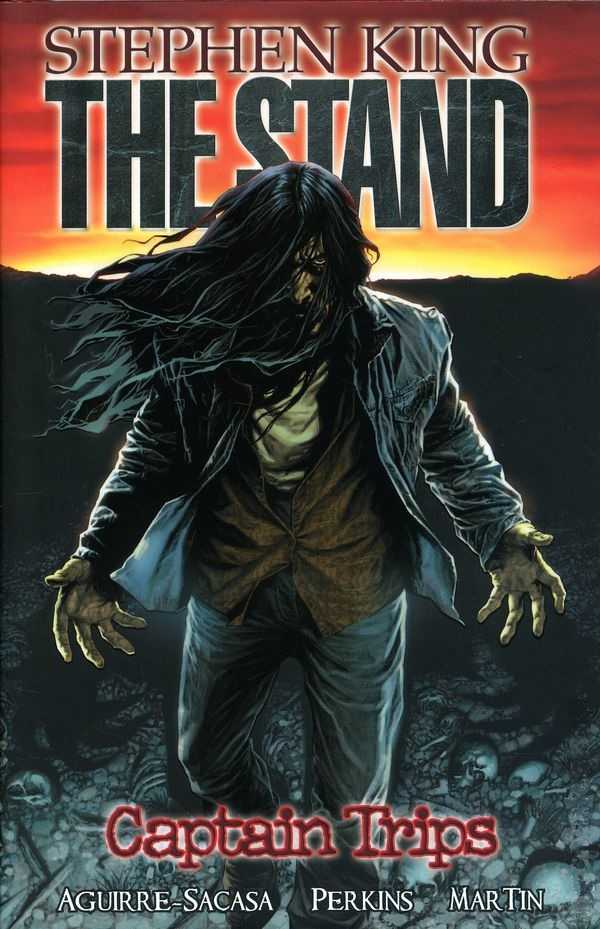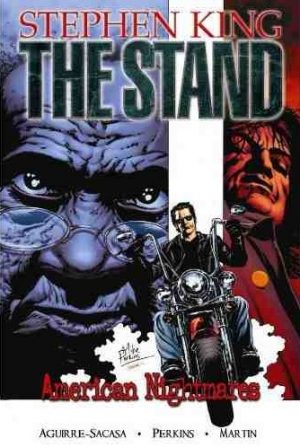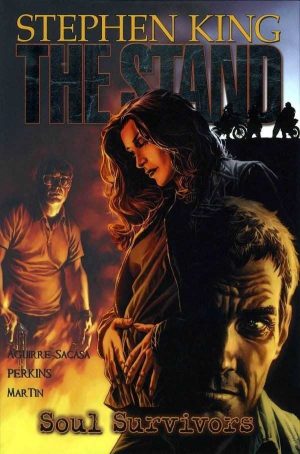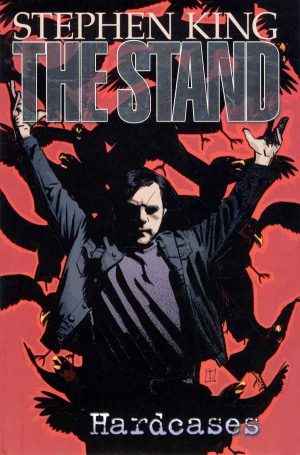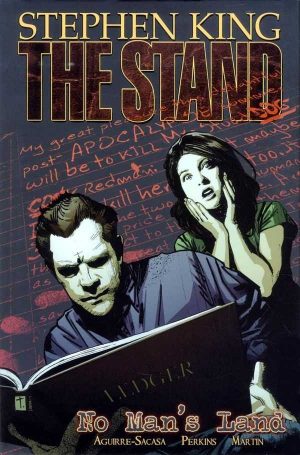Review by Ian Keogh
When The Stand was published in 1978, it was a fine slab of post-apocalyptic fiction, beginning with the idea of a man-made disease designed to wipe out great swathes of the world’s population. It’s proved an idea with legs. How many global pandemic scares have we suffered since then? Never substantiated rumours persist that AIDS, identified several years after The Stand’s first edition, was a human creation deliberately let loose for different purposes according to your conspiracy web page of choice.
Marvel have adapted The Stand properly. This is no compression of Stephen King’s doorstop novel into half a dozen twenty page comics, it’s the full monty over six volumes, and as such if you’ve never read the original book you’re not missing much by picking up this adaptation instead. For starters you’re getting page after page of great art from Mike Perkins, whose figurative style is ideally suited to a book that largely lacks fantasy trappings. King’s story accentuates the horror by focussing on victims. Lots of people die, and to begin with they’re all introduced as relatively ordinary and likeable. King knows a disease is no judge of character, and Perkins is excellent at conveying personality accentuating our sorrow when cast members die.
Certain characters recur. As over time these will become the story’s focus, King and adapter Robert Aguirre-Sacasa spend more time with them, ensuring we know them well, their better characteristics and the secret fears they harbour. It’s not until the fourth chapter that we’re introduced to Randall Flagg who has a major role throughout the series, and is drawn in an appropriately foreboding manner by Perkins (and on Lee Bermejo’s cover). He’s initially a subject of curiosity. Why is it that people are so repelled by his appearance, his very presence? And can he really do magic? As we learn about him and his past activities, however, it’s clear this is a very different form of character construction.
So why the subtitle? ‘Captain Trips’ is the sardonic nickname popularly applied to the disease as the government continues to deny it’s anything other than a flu outbreak, while simultaneously quarantining communities, murdering anyone close to the truth and dumping corpses by the thousand. The slow build to this horror is excellently conveyed, the normalcy of Perkins’ art applying equally to these disturbing scenes. There is some justifiable cynicism about the way the authorities would act under the circumstances, and in this early stage of the proceedings it’s accentuated, which is no bad thing.
The Stand’s first edition set events two years in the future of 1980, and for a while every time the novel was reissued the date was moved forward, but technology has now well overtaken events. To begin with at least, this has to be the pre-internet and cellphone world for the plot to work. For anyone who grew up with it, noting The Stand is now a period drama is going to hurt.
Plenty of back-up material concludes the book before we move to American Nightmares. There are the covers to the original comic serialisation, preparatory character sketches with explanations and Aguirre-Sacasa’s script for the final chapter collected here. Those with money can find all six volumes adapting The Stand collected in a slipcased Omnibus edition.
